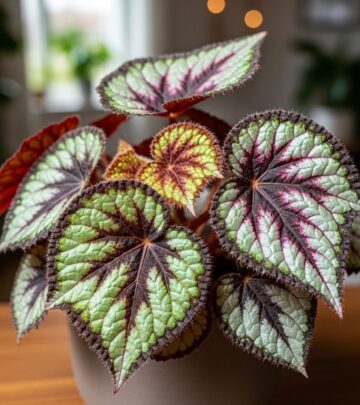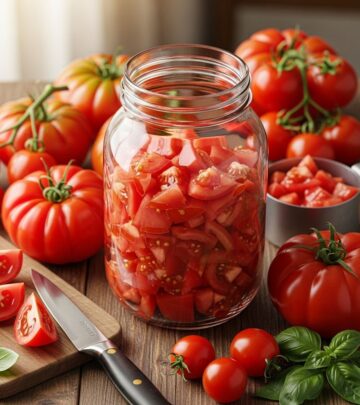Deer Resistant Herbs: 9 Essential Plants To Protect Your Garden
Safeguard your garden naturally with aromatic, deer-resistant herbs that thrive in any landscape.

Image: HearthJunction Design Team
The Ultimate Guide to Deer-Resistant Herbs for Your Garden
If you’ve ever watched helplessly as a group of deer transformed your lush garden into a buffet, you know the challenge of gardening where deer are common. Fortunately, you can naturally protect your flowers and vegetables with strategic planting. Many popular herbs are not only beautiful and useful in the kitchen but also act as natural deer repellents due to their strong aromas, fuzzy foliage, or unpalatable flavors. This comprehensive guide explores the top deer-resistant herbs, how to grow them, and practical advice for maintaining a thriving, deer-free garden.
Why Plant Deer-Resistant Herbs?
Deer are notorious for browsing through gardens, eating a wide variety of ornamental and edible plants. However, their keen sense of smell leads them to avoid plants with strong fragrances or unappealing textures. Many classic culinary and medicinal herbs fall into this category, making them ideal for building a natural barrier against deer. By strategically incorporating these herbs, you can:
- Protect vulnerable plants from deer damage
- Enhance your garden’s diversity and fragrance
- Reduce the need for unsightly fencing or chemical deterrents
- Provide habitat and forage for beneficial pollinators
Top Deer-Resistant Herbs
The following herbs are renowned for deterring deer due to their scent, texture, or taste. Learn about their unique characteristics, growing tips, and how they can fit into your garden strategy.
Lavender (Lavandula spp.)
Lavender is a garden classic famous for its fragrant purple blooms and silvery, aromatic foliage. Deer dislike the strong scent and fuzzy leaves, making lavender one of the best natural deterrents you can plant. All varieties repel deer, but those with the highest essential oil content—such as English lavender (L. angustifolia) and Lavandin hybrids (L. x intermedia)—are especially effective. Even French and Spanish lavenders offer protection thanks to their sage-like, camphorous aroma.
- Blooms: Summer
- Growing Needs: Full sun, well-drained soil
- USDA Zones: 5–9
Rosemary (Rosmarinus officinalis)
With its pine-like fragrance and sharp, needle-shaped leaves, rosemary is both a culinary favorite and a reliable deer repellent. The pungent oils released by brushing against the plant are highly unpalatable to deer. Rosemary also thrives in drought-prone areas and can double as a handsome hedge or border.
- Blooms: Late spring to mid-summer
- Growing Needs: Full sun, well-drained soil
- USDA Zones: 7–10 (some varieties hardy to zone 6)
Sage (Salvia officinalis)
Sage is a tough, versatile herb with soft, silvery leaves covered in tiny hairs. Its earthy, medicinal aroma is another strong deterrent for deer. Both culinary sage and ornamental varieties are effective—plant them in the garden or containers for consistent protection.
- Blooms: Late spring to early summer (ornamental types may bloom longer)
- Growing Needs: Full sun, well-drained soil
- USDA Zones: 4–8
Thyme (Thymus vulgaris and others)
Thyme’s low-growing, fragrant mats add texture and aroma to borders and paths. Its tiny leaves and pungent scent keep deer at bay, while offering excellent ground cover or trailing accents in containers.
- Blooms: Early to late summer (depending on species)
- Growing Needs: Full sun, well-drained soil
- USDA Zones: 5–9
Marjoram (Origanum majorana)
Marjoram, closely related to oregano, has a sweet, mild aroma deer avoid. It produces clusters of tiny white or pink flowers in midsummer and is both drought-tolerant and container-friendly. Its gentle flavor is prized in the kitchen, especially for Mediterranean dishes.
- Blooms: Midsummer
- Growing Needs: Full sun, well-drained soil
- USDA Zones: 9–10 (grown as annual in cooler climates)
Oregano (Origanum vulgare)
Oregano features robust, aromatic foliage that releases a spicy fragrance unpleasant to deer. As a spreading perennial, it’s ideal for planting along borders or as ground cover in sunny locations.
- Blooms: Summer
- Growing Needs: Full sun, well-drained soil
- USDA Zones: 4–9
Bee Balm (Monarda spp.)
Bee Balm, also known as Monarda, has minty-scented foliage and showy, spiky flowers in shades of red, pink, violet-blue, and white. Its strong aroma deters deer but attracts bees, butterflies, and hummingbirds.
- Blooms: July to August
- Growing Needs: Full sun to part shade, rich soil
- USDA Zones: 4–8
Yarrow (Achillea millefolium)
Yarrow boasts feathery foliage and clusters of colorful blooms. Its bitter, aromatic leaves discourage deer. Drought-tolerant and resilient, it’s well-suited to borders and wildflower gardens.
- Blooms: Early to late summer
- Growing Needs: Full sun, well-drained soil
- USDA Zones: 3–9
Mint (Mentha spp.)
Deer dislike all types of mint, from spearmint to peppermint, because of their strong, menthol-rich aroma. Mint can spread aggressively, so grow it in containers or confined beds to prevent invasion.
- Blooms: Summer
- Growing Needs: Full sun to part shade, moist soil
- USDA Zones: 4–9
Other Notable Deer-Resistant Herbs
- Chives: Oniony scent and fine foliage deter deer.
- Chervil: Subtle, anise-like fragrance is unappealing to deer.
- Fennel: Licorice aroma and tall, feathery foliage.
- Cilantro/Coriander: Pungent, citrusy scent repels browsing animals.
- Dill: Aromatic, feathery leaves unappealing to deer.
How to Use Herbs for Maximum Deer Protection
Certain planting strategies maximize the protective value of deer-resistant herbs:
- Edging and Borders: Surround desirable, vulnerable plants (like roses or lettuce) with a border of strong-scented herbs, especially lavender, sage, or rosemary.
- Camouflage Gardens: Mix deer-resistant perennials with herbs, such as yarrow, bee balm, foxglove, and larkspur, to create a multi-layered barrier.
- Container Gardens: Grow aggressive or spreading herbs (like mint or marjoram) in pots and place them near entrances or garden beds.
- Companion Planting: Place herbs like garlic and onions close to more attractive vegetables to protect them by association.
Tips for Growing and Maintaining Deer-Resistant Herbs
- Choose the Right Site: Most deer-resistant herbs prefer full sun and well-drained soil. Amend planting beds with compost to improve drainage if needed.
- Water Wisely: Many of these herbs are drought-tolerant once established, but young plants need consistent moisture.
- Pruning and Harvesting: Regularly trim herbs to encourage bushy growth and enhance aroma, further deterring deer.
- Soil Fertility: Feed with organic fertilizers like compost or balanced blends to encourage healthy, robust plants.
- Winter Care: Some herbs are perennial only in warmer zones. Mulch roots or bring pots indoors during harsh winters.
Beyond Herbs: Mix and Match With Other Deer-Repelling Plants
For added protection, pair deer-resistant herbs with other aromatic or toxic plants. Consider including these companions in your landscape design:
- Foxgloves
- Larkspur
- Daffodils (Narcissus)
- Night-Blooming Jasmine
- Comfrey
- Texas Bluebonnet
- Nicotiana
These plants work synergistically with herbs to create a multi-layered defense system for your garden.
Additional Deer Deterrent Strategies
- Physical Barriers: Install fencing if deer pressure is extremely high.
- Motion-Activated Devices: Use sprinklers, lights, or noise-makers to scare deer from the garden.
- Homemade Repellents: Some gardeners use sprays made from garlic, eggs, or spicy solutions to further discourage browsing.
Quick Reference Table: Deer-Resistant Herbs
| Herb | Key Repellent Feature | Best Use | USDA Zones |
|---|---|---|---|
| Lavender | Strong scent, fuzzy foliage | Border, hedge, perennial beds | 5–9 |
| Rosemary | Piney aroma, tough leaves | Hedge, container, edge | 7–10 |
| Sage | Earthy, medicinal scent | Mixed beds, containers | 4–8 |
| Thyme | Minty scent, low growth | Ground cover, paths | 5–9 |
| Marjoram | Mild, sweet aroma | Container, herb garden | 9–10 |
| Bee Balm | Minty scent, colorful blooms | Pollinator gardens, mixed borders | 4–8 |
| Yarrow | Bitter, aromatic leaves | Wildflower meadow, borders | 3–9 |
| Mint | Strong menthol aroma | Container, moist beds | 4–9 |
Frequently Asked Questions (FAQs)
Are any herbs completely deer-proof?
No plant is truly deer-proof. In times of scarcity, deer may sample even pungent herbs. However, herbs like lavender, rosemary, and sage are rarely eaten by deer under normal circumstances because of their strong scents and flavors.
Will deer eat young or newly transplanted deer-resistant herbs?
Young plants may be more vulnerable if their essential oils aren’t fully developed. Protect new transplants with temporary barriers until established, then they become more effective repellents.
Are all varieties of lavender equally effective?
Most lavenders repel deer, but those with the highest essential oil content (such as English lavender and Lavandin) are considered the most potent deterrents. However, even other varieties like French and Spanish lavender work well.
Can I use these herbs to create an edible landscape?
Absolutely. Many deer-resistant herbs are also culinary staples, making them perfect for edible landscaping. Incorporate them in vegetable and flower beds for dual-purpose beauty and protection.
What other methods help keep deer out of the garden?
Combine strategic planting with fencing, motion-activated deterrents, and natural repellents for best results. Interplanting with deer-resistant herbs forms a first line of defense; additional measures may be necessary if deer pressure is high.
Conclusion: Build a Beautiful, Deer-Resistant Garden
With thoughtful planning and the right selection of herbs, you can enjoy a vibrant, productive garden that remains largely untouched by deer. Whether you border your flower beds with lavender, tuck rosemary and sage among your vegetables, or plant mint in containers, these aromatic, easy-to-grow herbs can provide both culinary rewards and natural protection. Combine your plantings with other deterrent strategies as needed, and reclaim your garden from deer—naturally!
References
- https://www.epicgardening.com/lavender-deer/
- https://shop.epicgardening.com/products/marjoram-organic-seeds
- https://www.espoma.com/landscaping/6-beautiful-and-deer-resistant-perennials/
- https://www.youtube.com/watch?v=z4gPTvkP6ac
- https://sunnydazedecor.com/blogs/news/how-to-keep-deer-away-from-your-vegetable-garden
Read full bio of medha deb












